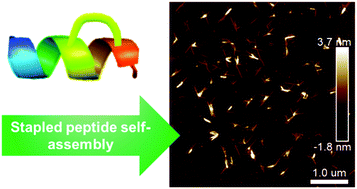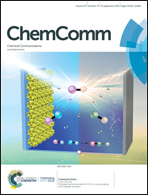Directional assembly of a stapled α-helical peptide†
Abstract
The de novo design of stapled peptide-based self-assemblies attracts vast interest, yet still remains challenging. The development of an oxidation trigger for peptide stapling and subsequent self-assembly is described here. A self-assembling sequence, Fmoc-R(RCEX)2-NH2, transformed from a random coil to an α-helical structure upon disulphide bonding of the flanking cysteine residues positioning at the i/i + 4 locations. The stapling form of this peptide enforces a conformational restraint that affords the driving force for self-assembly into nanorod/nanovesicle structures. Moreover, these assembled materials can transport siRNA into cancer cells and immediately release the cargo in a reductive environment.



 Please wait while we load your content...
Please wait while we load your content...